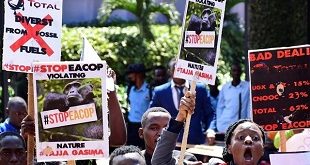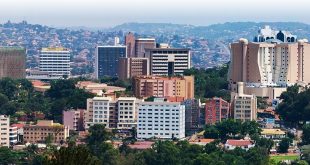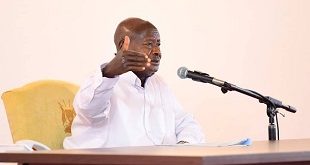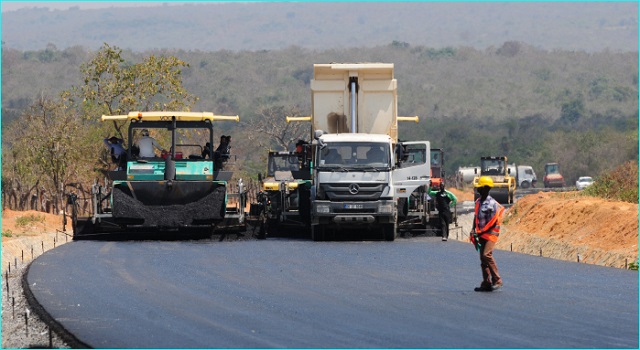
Why Uganda was not on the list for worst roads
COVER STORY | THE INDEPENDENT | A new report on the state of roads attributed to the International Monetary Fund (IMF) has recently left Ugandans agitated for a surprising reason; that their country was not named among the top 10 with the worst roads.
Part of the explanation for the unusual reaction could be contextual; that the report hit Ugandan media when the country was engulfed in general hysteria over the declining state of road infrastructure; especially in the metropolitan areas of the capital city Kampala.
Activists on the social media platform X (formerly Twitter) have recently ran a campaign dubbed the “Kampala Potholes Exhibition” which invited members of the public to post pictures of the nasty ditches on roads in their localities.
At the height of the campaign President Yoweri Museveni intervened and ordered the Ministry of Finance to release some emergency money to fix the roads.
Then in September lawmakers from Kampala Capital City Authority (KCCA) constituencies issued a two-week ultimatum to the government to fix roads and drainage in Kampala or face battles with protesters on the streets.
“We shall not sit down and see all these challenges, we are giving them an ultimatum of a maximum of two weeks to work on most of the challenges that have affected our people, most especially when it comes to flooding. We all know what causes flooding, the status and quality of our drainage is in a bad state,” said Rubaga North MP Abubaker Kawalya.
Based on this build-up, many Ugandans concluded that a report that claimed to show the ten countries with the worst roads in Africa and does not include Uganda is dubious.
Most of their views were based on an edited list of countries extracted from the main report by the Business Insider Africa news website on Nov.17. The list was extracted from a list of countries from across the globe.
Under the title: “Business Insider Africa presents 10 African countries with the worst road infrastructure” the publication listed 10 worst countries starting with Rwanda. Others in that order were Guinea, Burundi, Madagascar, Gambia, Nigeria, Ghana, Cameroon, Tanzania, and Kenya.
The author of the story noted that the struggle with inadequate road infrastructure casts a shadow over economic prospects and societal well-being.
It was noted that despite its economic importance, some African countries have road infrastructure issues. Across various regions, the struggle with inadequate road infrastructure casts a shadow over economic prospects and societal well-being.
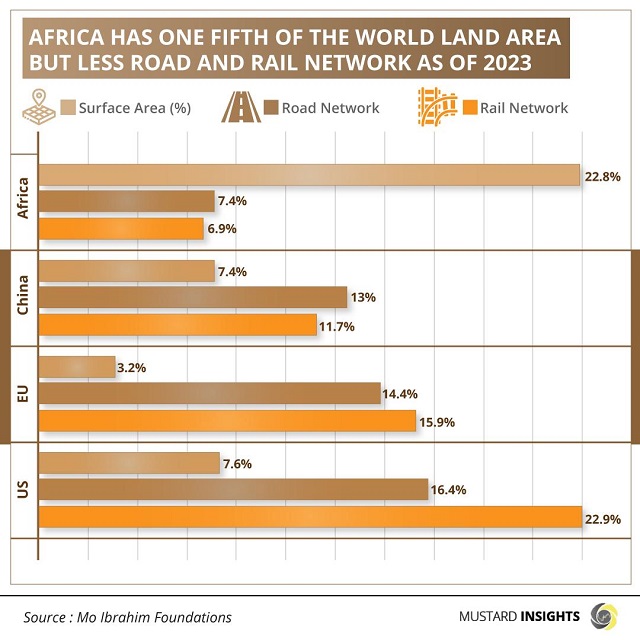
It said the International Monetary Fund (IMF) working papers on road quality and mean speed score reveal to what extent some African nations are facing challenges in their road infrastructure.
It said the IMF had developed a novel measure of cross-country road quality based on the mean speed between large cities from Google Maps. This Mean Speed (MS) score serves as an effective proxy for evaluating road quality and accessibility.
It said the MS score correlates with the existing World Bank’s Rural Access Index and the WEF’s Quality of Road Infrastructure score, which was a misleading reading.
Emblems of development
Business Insider Africa had earlier on Nov.15 reported on how good roads are arteries through which the economy pulses. At that point, the focus was on 10 African countries with the best road infrastructure.
It noted that good roads have become emblematic of a nation’s commitment to progress, offering smoother travel for citizens and visitors alike. It said the World Bank calls roads the arteries through which the pulse of economy flows.
“Roads link up producers with markets, get workers to their jobs, help students get to school, and even get the sick to the hospital,” it said, “For any country globally trying to grow roads are critical infrastructure.”
It listed the countries with the best roads as South Africa in first position. Other that followed in that order were listed as Namibia, Morocco, Botswana, Libya. Algeria, Zimbabwe, Egypt, Cote D’Ivoire, and Tunisia.
The story noted that many African countries are putting money where the asphalt is.
“The primary motivation behind these investments is the understanding that well-developed roads translate to economic growth, job creation, and well-connected communities,” the author said, “Beyond the physical connectivity, good roads have become emblematic of a nation’s commitment to progress, offering smoother travel for citizens and visitors alike.”
Not IMF position
The Business Africa reports are based on an IMF Working Paper titled: “Road Quality and Mean Speed Score” which sought to introduce a novel measure of cross-country road quality based on the travel mean speed between large cities from Google Maps. In Uganda the authors considered mean speeds as given by Google from Kampala to Fort Portal, Gulu and Mbarara.

The authors, Mariano Moszoro and Mauricio Soto, argued that their MS measure is useful to assess road infrastructure and access gaps.
“Our Mean Speed (MS) score is easier to estimate and update than traditional gauges of road network quality which rely on official reports, surveys or satellite imaging,” they said, “We show that the MS score is a strong proxy for road quality and access.”
They were referring to indices reports such as the World Economic Forum’s Quality of Roads Perception survey and the World Bank’s Rural Access Index.
They reported that in their sample of over 160 countries, they find that MS scores range between 38 km/h and 107 km/h.
Based on their complete list, the countries with the worst roads in the world are Bhutan, Nepal, and Timor-Leste. The countries with the best roads are the United States, Portugal, and Saudi Arabia. According to their report, some African countries are doing well with road infrastructure. South Africa and Namibia are among the 10 countries with the best road infrastructure in the world ahead of countries like Germany, Italy, France, and the UK. The evaluation spans over 160 countries.
But the report is from May 2022 and was published with a caveat that IMF Working Papers describe research in progress by the author(s) and are published to elicit comments and to encourage debate. The views expressed in IMF Working Papers are those of the author(s) and do not necessarily represent the views of the IMF, its Executive Board, or IMF management.
The authors also presented alternative measures such as the computation of the geometric Mean Speed (gMS) which is a score of the geo-metric average of the travel speed between the selected cities by country. The other measure was Adjusted Mean Speed Score (AMS) which can be used in cases where the geography of the country may drag down speed. These include mountains, bays, swamps, and other geographic obstacles.
Growing focus on roads
The interest on quality of roads in Uganda and in other African countries comes when the African Development bank (AfDB) has recently released a report titled “Cross-Border Road Corridors – Expanding Market Access in Africa and Nurturing Continental Integration”.
The AfDB notes that roads are the main mode of transport on the continent, carrying 80 percent of goods and 90 percent of passenger traffic.
However, Africa has significant road infrastructure deficit leading to increased transaction costs and low level of Intra-Africa trade which sit at just 18% of total goods traded in the continent.
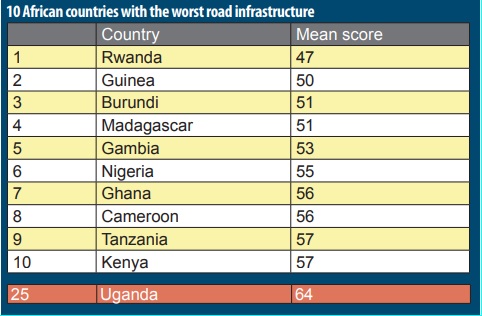
The report released in late November documents the Bank Group’s commitment to supporting regional member countries to expand road infrastructure especially cross-border transport corridors. Through its financing and investments, the Bank is helping remove infrastructure bottlenecks, reducing barriers to cross-border trade and achieving regional integration.
It shows that between 2004 and 2022, the Bank provided over US$13 billion to finance regional road corridor projects. As a result, close to 18,022 kilometer of climate resilient, regional highways have been built on 25 road corridors, along with 27 one-stop border post facilities and 18 bridges.
Some of these corridors were built as part of the Trans-African Highway network under various continental and regional infrastructure development programs including the Program for Infrastructure Development in Africa (PIDA).
In the East Africa region, they include the Northern Corridor to develop trade from between Burundi, D.R. Congo, Kenya, Rwanda and Uganda.
The Northern Corridor International Trunk Road serves as a major transit route for traffic from the port of Mombasa in Kenya, through Nairobi, stretching 2,300 kilometres across Kenya and Uganda to Rwanda and Burundi and the Democratic Republic of Congo (DRC). The corridor also provides the shortest route for traffic between eastern DRC and Kampala, the Ugandan capital.
The AfDB supported the establishment of the Northern Corridor Transit and Transport Coordination Authority to administer the implementation of this development.
In Uganda, the AfDB financed the 103km Fort Portal – Bundibugyo – Lamia highway, the 23km Kampala – Mpigi expressway, the 53km Kampala – Jinja expressway, and the 73km Kapchorwa – Suam highway.
The AfDB report notes that Africa’s significant road infrastructure deficit creates increased production and transaction costs that must be addressed to scale opportunities envisaged under the Africa Continental Free Trade Area, a new report has found.
“Just 53 percent of roads on the continent are paved, isolating people from access to basic services, including healthcare, education, trade hubs and economic opportunities,” according to the publication, released at a special session of the Africa Investment Forum 2023 Market Days in Marrakech, Morocco.
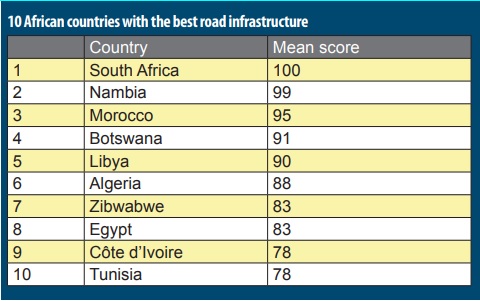
AfDB President, Dr Akinwumi A. Adesina said leaders need to speed up the integration of African economies, lower transport costs, connect landlocked countries to coastal countries, and improve regional trade and competitiveness.
“That is the Africa we want: a fully interconnected Africa, using regional corridor infrastructure and innovative regional financing instruments, to unleash economic opportunities and assure competitiveness of national and regional value chains. A well-connected Africa will be a more competitive Africa.”
He suggested five priority areas to fully optimise the benefits of the developing regional corridors across Africa.
These include dedicating pooled financing facilities to corridor projects, building special industrial zones around the corridors to optimize existing infrastructure, adopting a systematic approach and platform to syndicate around the development of strategic regional corridors.
He said the development of regional corridors should be complemented with one-stop border posts to facilitate trade and reduce travel times on the corridors. He proposed concessional financing, such as the AfDB Fund, which offers low-income countries unmatched resources to commit to developing regional corridors.
African leaders responding
According to the online publication Mustard Insights, transportation cost in Africa is about 63% higher than it is in developed countries which hampers competitiveness in the local and international market.
Today, the proportion of paved roads in the continent is five times less than those in developed countries despite having a higher land surface area.
China and the United States of America are only about 1/3 of the size of Africa, yet their road network is more than twice as long as Africa’s.
In a separate report by Ambassador Mark A. Green, the President & CEO, Wilson Center which provides nonpartisan counsel and insights on global affairs to policymakers through deep research, impartial analysis, and independent scholarship to the U.S. Congress, a study by the Infrastructure Consortium of Africa shows that poor infrastructure roads, railways, harbors, etc. adds 30-40% to the costs of goods traded among African countries.
He also cited an analysis by Deloitte which shows that the lack of physical infrastructure in Sub-Saharan Africa is still keeping many investors at bay.
“Large commodity finds such as oil, gas, iron ore, platinum, coal, and copper are driving the need for infrastructure,” he wrote, “Yet, at the same time, investment in infrastructure needed to extract and transport these commodities to the global market is also driving Africa’s economic growth.”
“The good news is that African leaders are increasingly aware of how infrastructure needs have been hindering their countries’ and people’s progress, and they are striving to respond,” he said, “In fact, infrastructure is the only subcategory in the Ibrahim 2022 Governance Report in which all 54 African countries have seen improvement since 2012.”
 The Independent Uganda: You get the Truth we Pay the Price
The Independent Uganda: You get the Truth we Pay the Price
